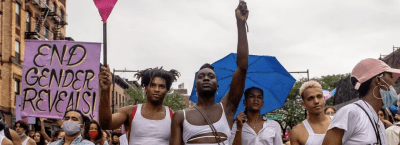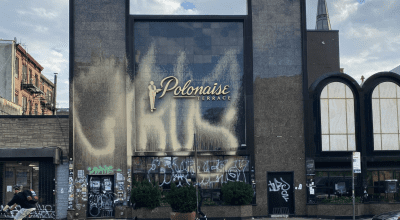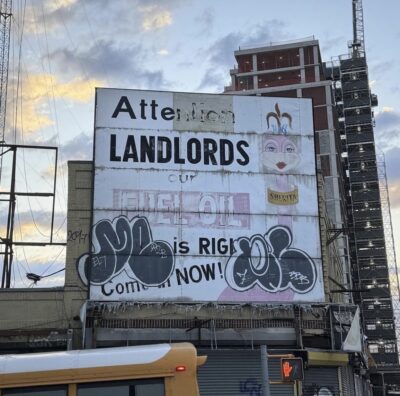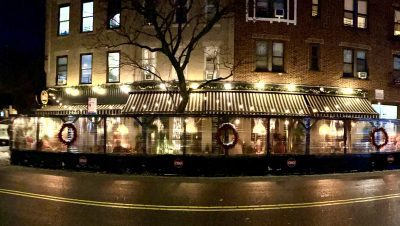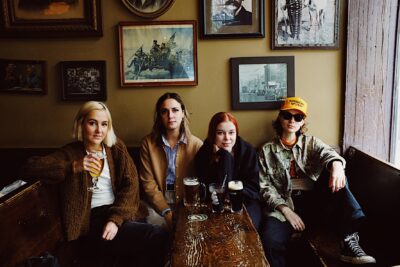Scenes from Battle of Brooklyn Day at Green-Wood Cemetery
There was no battle reenactment this year, but history buffs enjoyed a deep look at life in 1770s New York
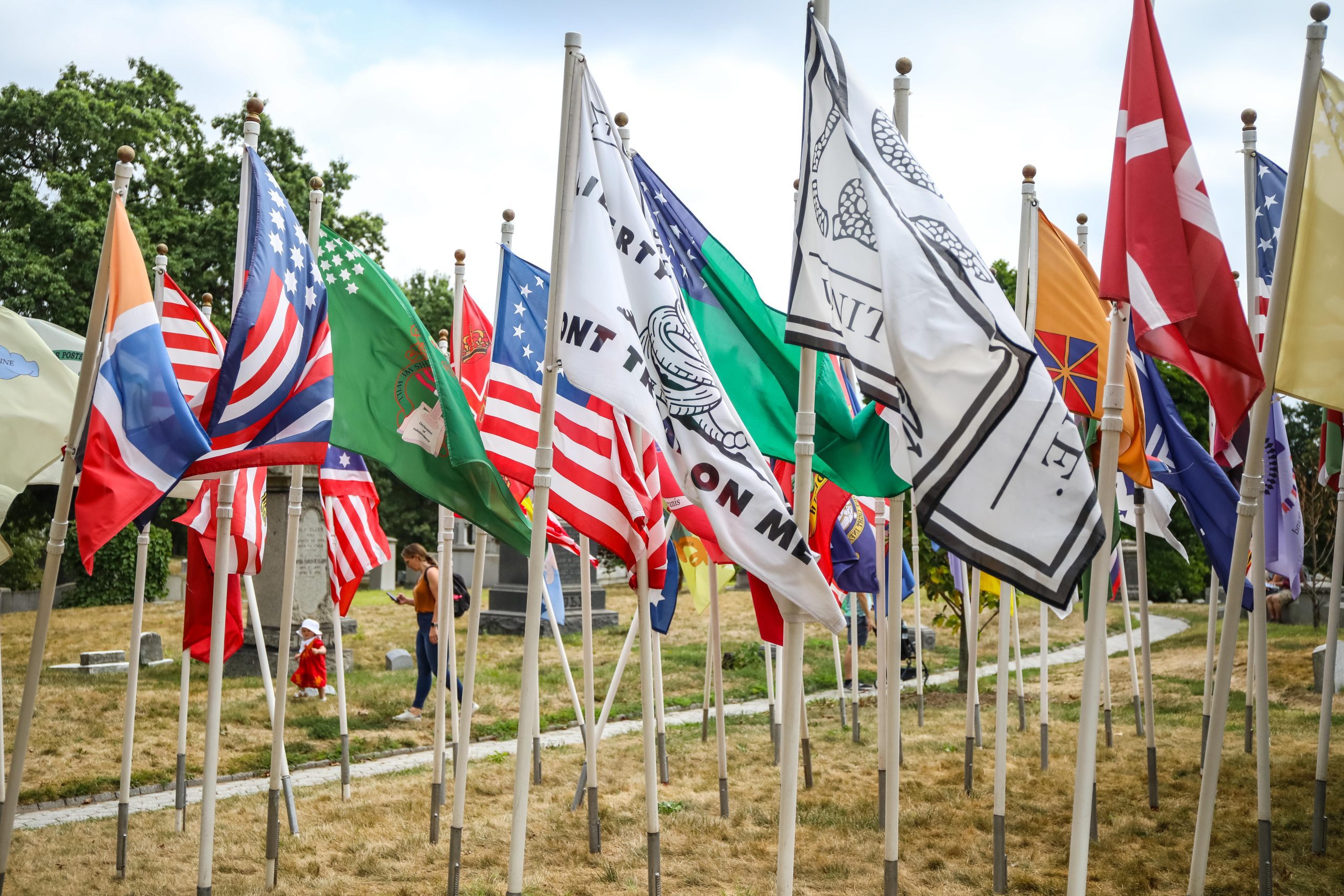
Militia flags (Scott Lynch)
The Battle of Brooklyn — also known as the Battle of Long Island — raged across almost the entire present-day borough in August of 1776, and was the largest engagement of the entire war, involving some 40,000 soldiers on both sides.
On Sunday, Green-Wood Cemetery, built on the site of some of the battle’s heaviest fighting, once again commemorated the colonists’ resounding defeat at the hands of William Howe’s British army 246 years ago (were it not for a counterattack by the Maryland 400 at the Old Stone House, which gave George Washington enough time to flee across the river to Manhattan with some 9,000 of his soldiers, the Revolution might have ended right then and there).
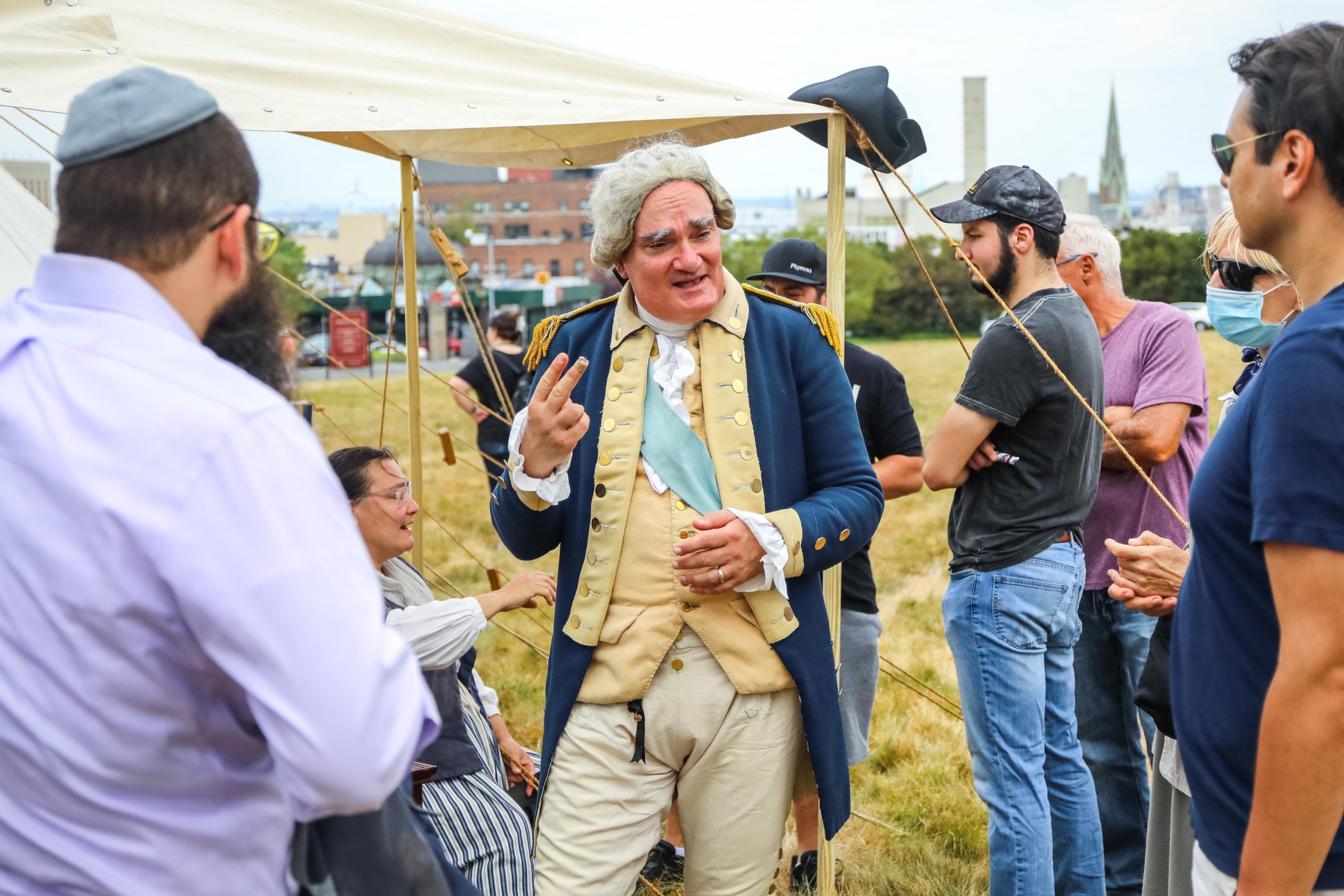

Michael Grillo as Washington, who did not have a good Battle of Brooklyn (Scott Lynch)
Unlike in pre-pandemic years, however, Sunday’s Battle of Brooklyn Day had no actual battle reenactment. There were no thunderous cannon blasts on the cemetery’s big front meadow, no crack and smoke of musket fire, no pretend killed-in-action lying face down in the grass.
Instead, as Green-Wood Cemetery’s director of education Rachel Walman explained to Brooklyn Magazine, the “activities and interactives” of the day, spread out from the front gate to the top of Battle Hill, were designed to give a broader picture of the American Revolution, and 1776 New York.
“Because of Covid we tried a new method last year that wouldn’t crowd people together like you had with the big battle reenactment,” said Walman. It’s more of a fair now, with a lot of booths. “We like the opportunity that this gives people to talk in smaller groups with the re-enactors.”
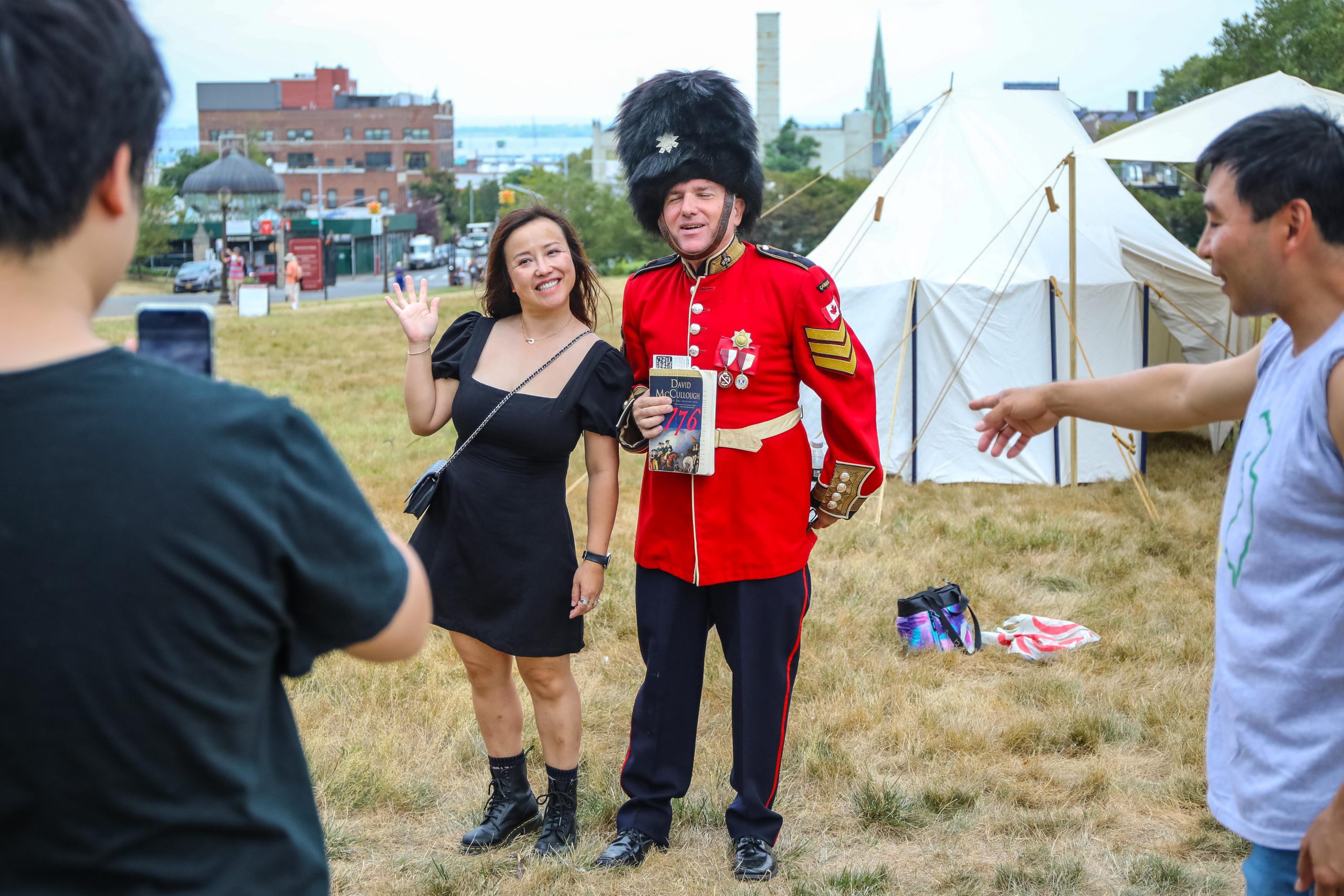

Posing with the enemy (Scott Lynch)
Plus, Walman said, “this is a tense time with gun violence. The subway shooting happened in this neighborhood, at the station right near the cemetery, and we felt that it was important to respect our neighbors and not have them hear gunfire or cannon fire coming from the grounds.”
The lack of gunplay took some attendees by surprise. Ivana Eckhart-Hamilton of Brooklyn told us that she had come for five years in a row before the pandemic, and missed the battle scene. “It was so spectacular,” she said. “There were so many effects, acoustic and visual, and there were more historic characters. I loved it.”
Still, there was plenty to see and do here. Living historians representing the 6th United States Colored Troops (also known as the 1st Rhode Island Regiment) answered questions and laid out an array of weaponry on a table in their tent.
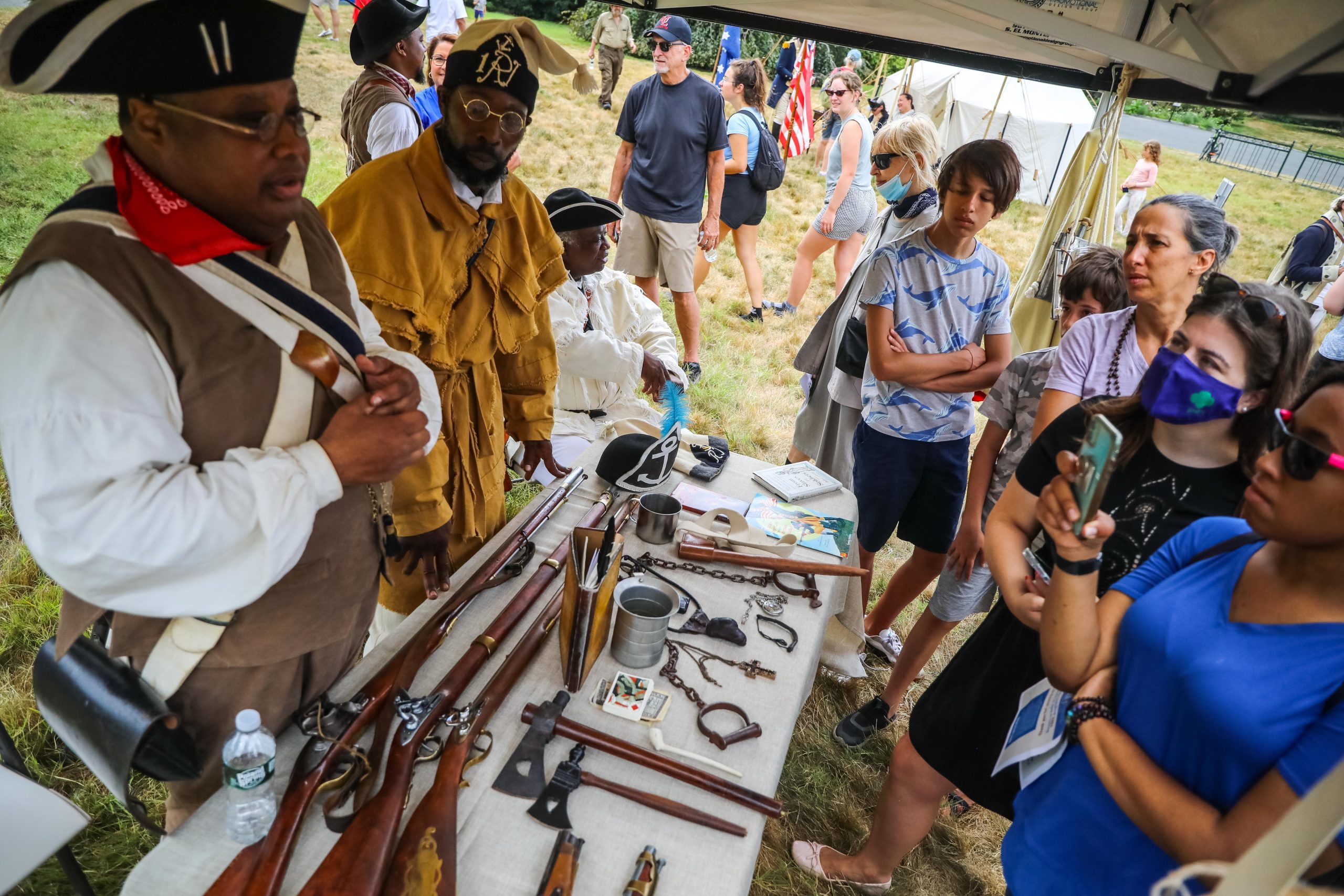

Living historians representing the 6th United States Colored Troops (Scott Lynch)
Michael Grillo was back portraying General Washington, a role he’s played here since 2008. And Judith Kalaora from Boston had a rapt audience all afternoon with her “interpretation” of Revolutionary War soldier Deborah Sampson, the first woman to fight in the American military, albeit disguised as a man.
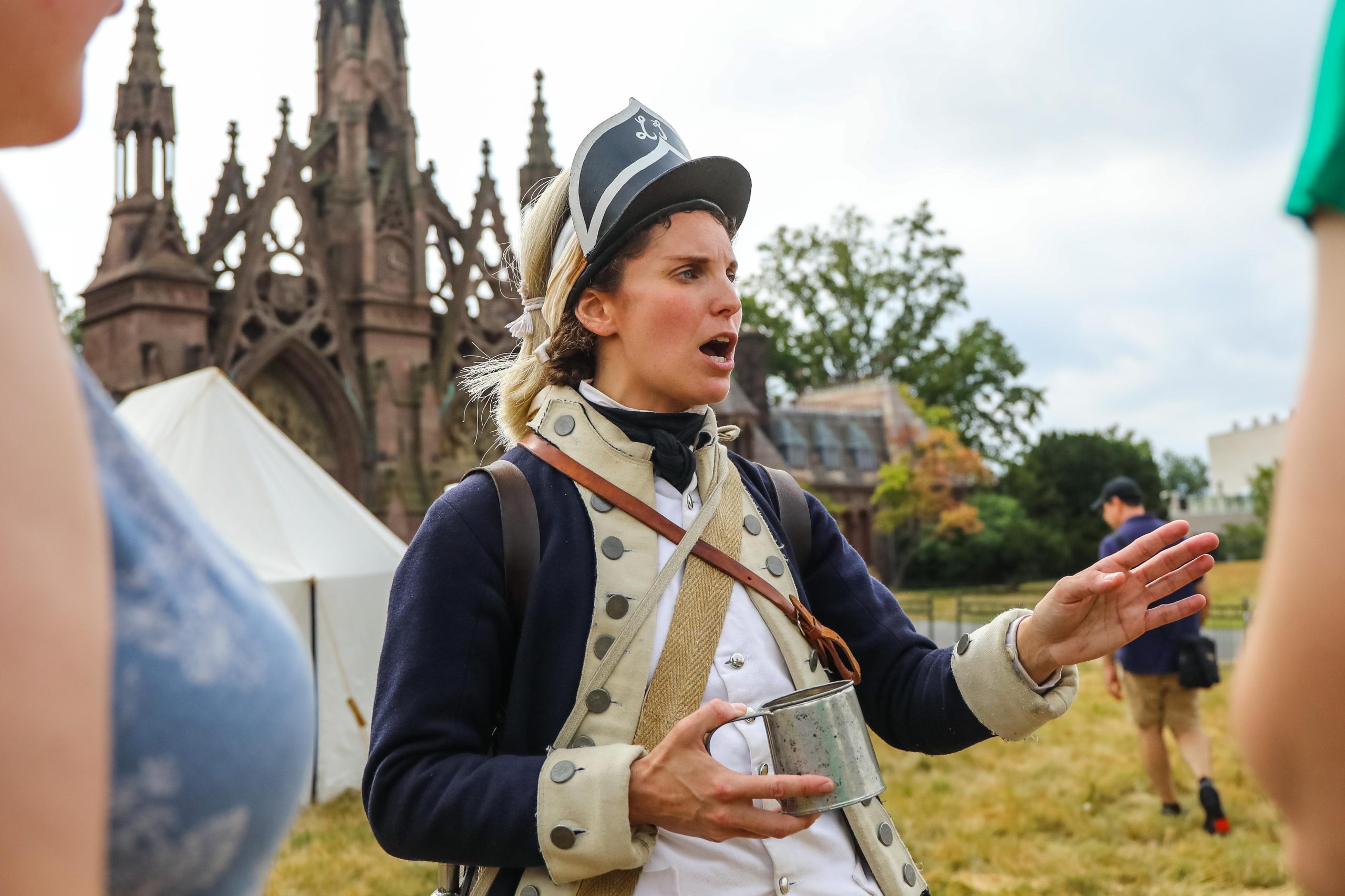

Kalaora as soldier Deborah Sampson, the first woman to fight in the American military, albeit disguised as a man (Scott Lynch)
Sampson told Brooklyn Magazine she was a fan of the new format. “Battle reenactments have their place in the field of living history,” she said. “But often the re-enactors are just engaging with each other, and are not always as forward-facing to the public as they are on historical interpretive days like this one.”
The New York Historical Society had a tent dedicated to the experience of freedom seekers, the self-emancipated, formerly enslaved people, as they navigated unfamiliar territory and traveled throughout the region.
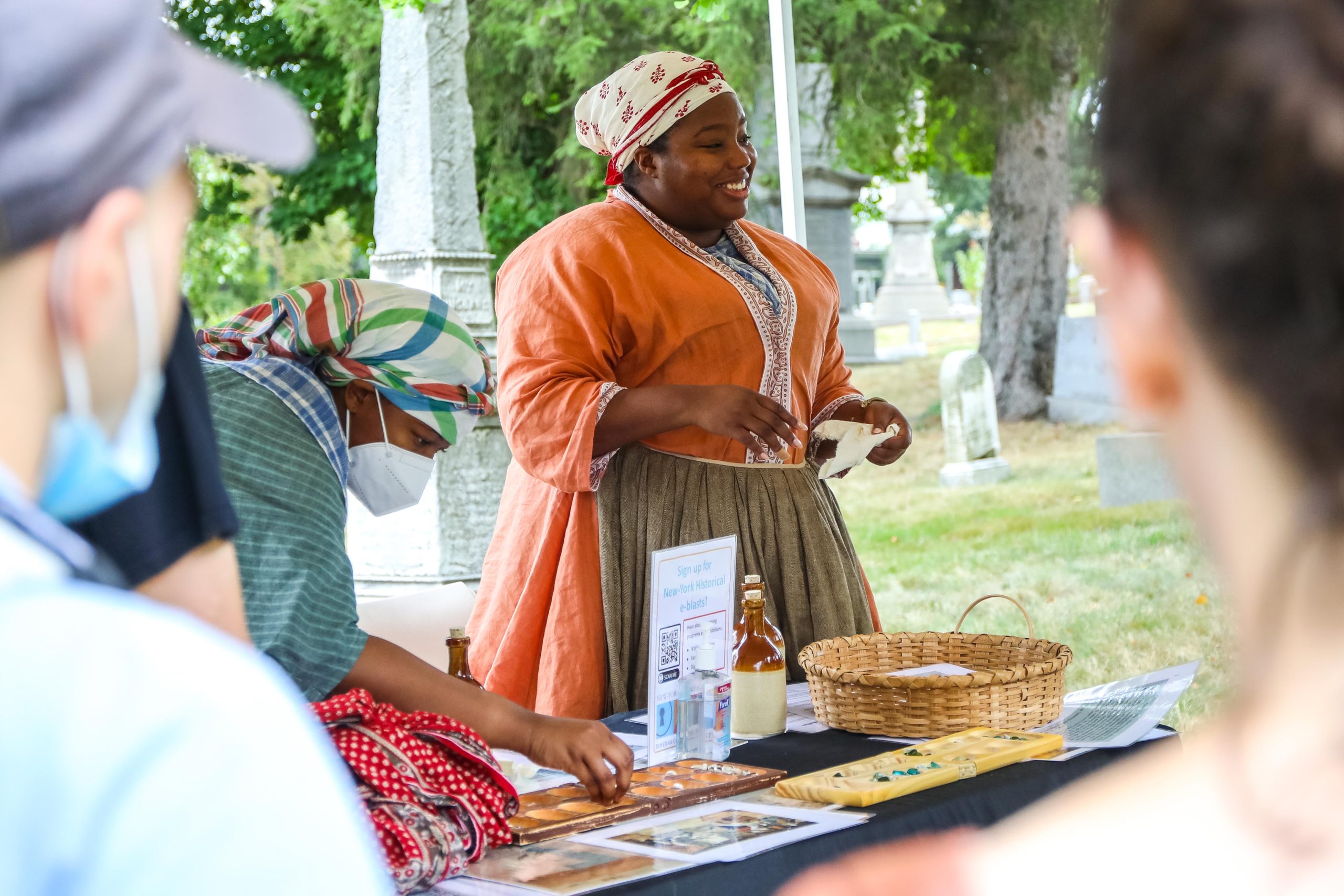

The freedom seekers tent, courtesy of the New York Historical Society (Scott Lynch)
Educators from the Brooklyn Public Library offered historical materials with a variety of contemporary takes on the Revolution, and encouraged people to make a pin that expressed their own personal opinion on the war.
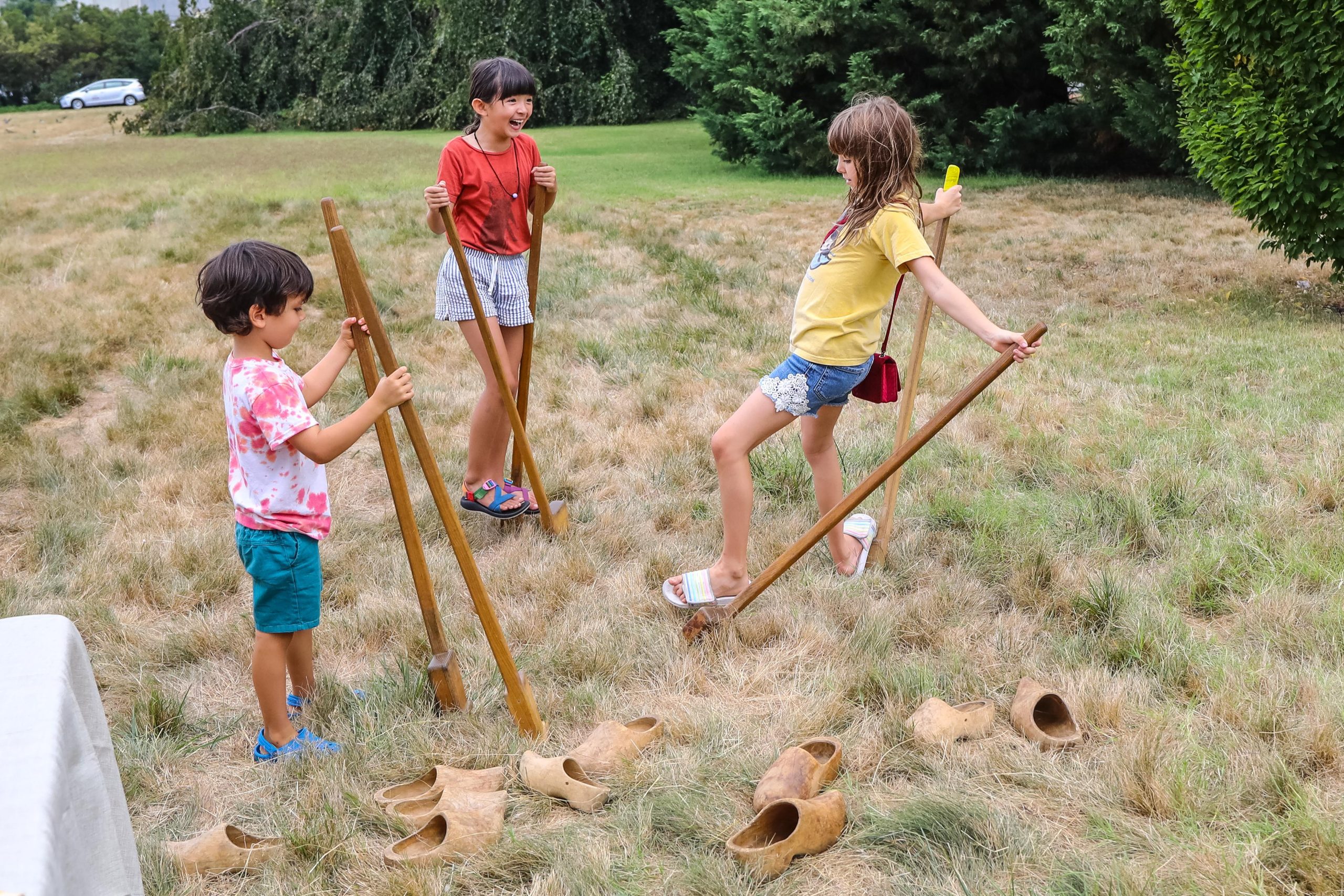

The Wyckoff House Museum brought 1770s-style toys (Scott Lynch)
The militia flags were already planted on Battle Hill when the day began — no march up the hill this year — next to the tomb of Charles Higgins, the ink magnate and virulent anti-vaxxer of the early 1900s. Frustrated that the battle had been given short shrift by historians, Higgins commissioned the statue of Minerva that stands before his resting place and commemorates the battle. The statue was unveiled in 1920, perched on the highest natural point in Brooklyn, where Minerva stands to this day with one arm up, saluting the Statue of Liberty.
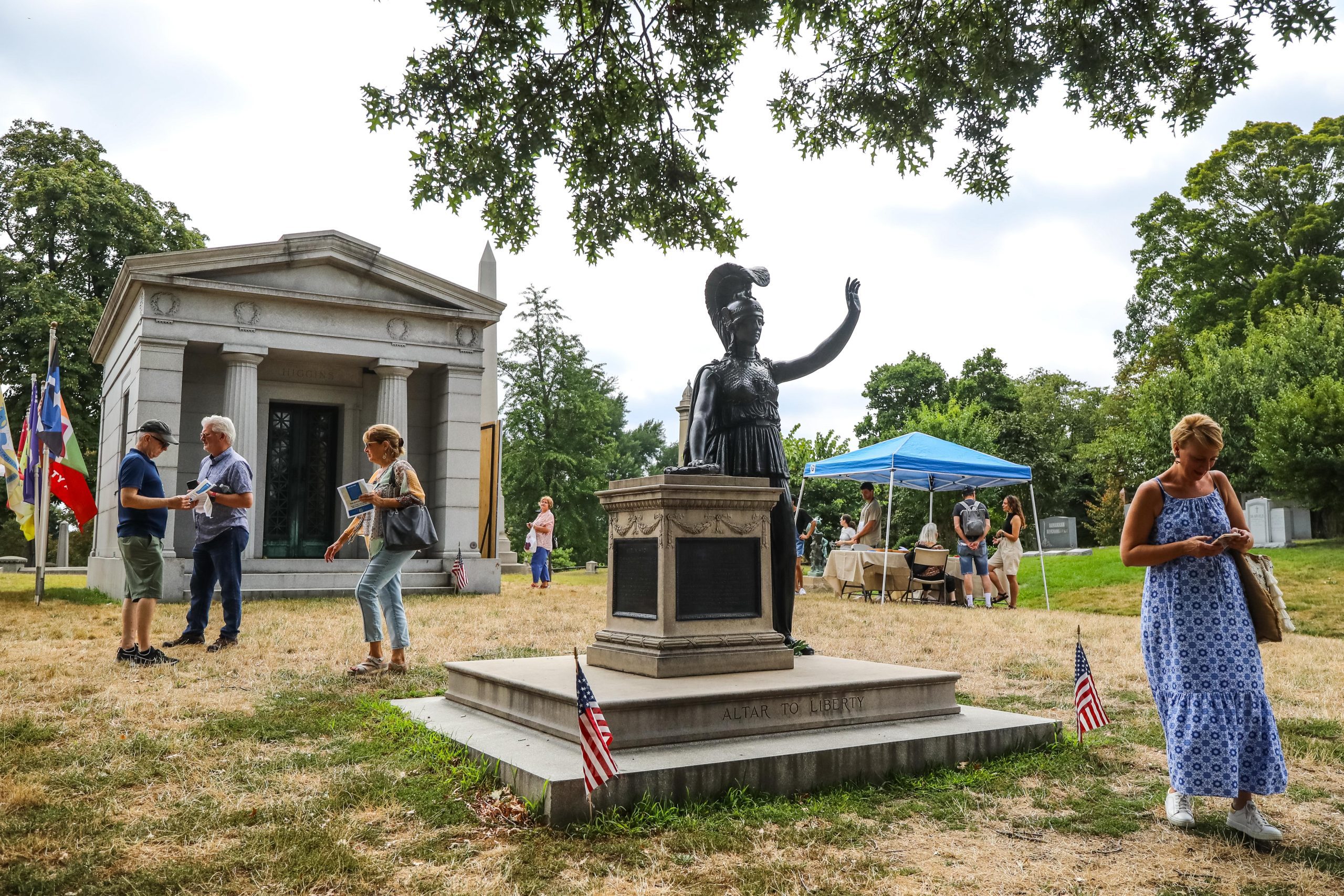

Minerva (Scott Lynch)
You might also like 

















